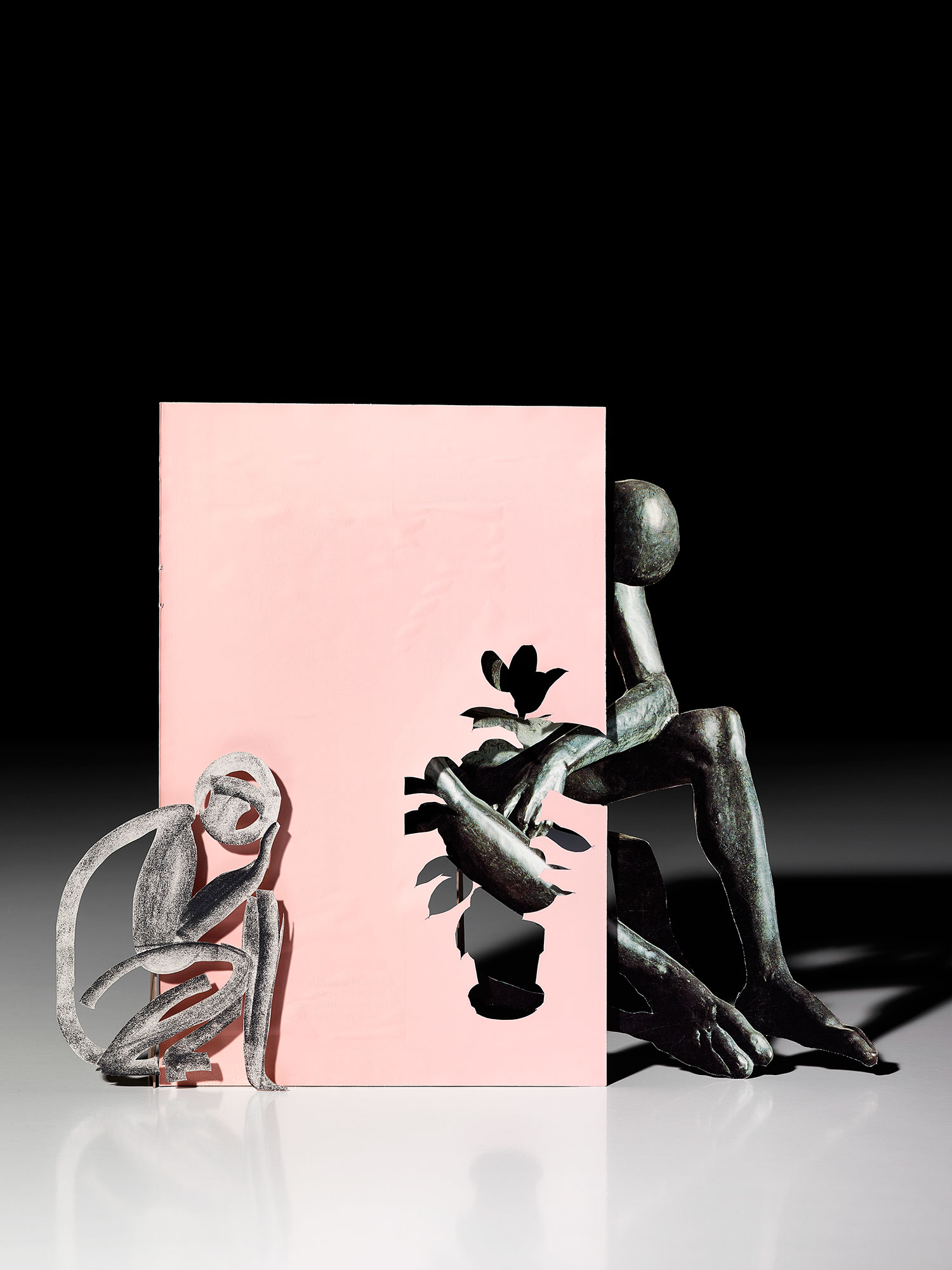





Looking Through Pictures (2016)
In this series, Lipps explores the genre of still life photography in relation to the mise-en-scène of theater as a space for figures, props, objects—and photography itself—to perform. With a broad cast of characters culled from various high and low sources, the “actors” range from the familiar to the formal (including modernist sculpture, figure models, and floral arrangements) set to a backdrop that engages the “death” of Modernism as seen through the medium of photography and artwork reproductions found on the book’s page.
In this self-reflexive exploration of his process, Lipps began by mining his archive of book pages—concentrating on those remnants from which images had been cut out and used as elements in previous works. He reimagines the negative space as both an absence and a presence – at once a void and a place of infinite possibility—marking the irretrievability of the original moment of modernism and its enduring influence on our imaginations and cultural representations.




In another step away from “the photographic,” the remnant pages are painted in opaque coats of pastel color, further stripping them of the representational capacity photographs are typically thought to bear. The soothing shades of pink, blue, lavender and silver reference Modernism’s impenetrable veneer of color-blocked surfaces and prompt consideration of our own nostalgic fascination with this history, as yesterday’s radical avant-garde become today’s fashion and lifestyle accoutrements. (To wit: shortly after Lipps finished this series, Pantone announced its hybrid Color of the Year “Rose Quartz and Serenity,” aimed at “consumers seek[ing] mindfulness and well-being as an antidote to modern day stresses.”)
By engaging with Modernism’s past through the medium of photography and specifically, the reproduced image/printed page, Lipps suggests the outmodedness not only of Modernism, but also of the very representational means through which we access this past. Against the immateriality of the digital image, he emphasizes the concrete physicality of the page. Upon close inspection his cutouts and backdrops reveal imperfections--such as tears, staple holes, and rippled surfaces—that insist on the corporeality of analogue media as well as their fragility and transience.








Ultimately, while this body of work looks back at Modernism’s past, it also reflects on the way this past continues to operate in the present. The painted backdrops provide a psychological architecture for the image: settings that no longer “contain” or hold the object, but mark its release into another space. These visually complex, layered windows create an indeterminate realm for objects and figures to interact and perform in intuitively arranged tableaux that beckon to the viewer to “reanimate” these actors according to their own scripts, be they dramatic or playful.






For inquiries about exhibitions and sales:
LOS ANGELES
Marc Selwyn Fine Art
9953 South Santa Monica Blvd.
Los Angeles CA 90212
info@marcselwynfineart.com
NEW YORK
Yancey Richardson Gallery
525 West 22nd Street
New York, NY 10011
info@yanceyrichardson.com
LONDON
Josh Lilley Gallery
44-46 Riding House Street
London W1W 7EX
info@joshlilley.com
For other things:
Email: Matt Lipps
Instagram: @_mattlipps_